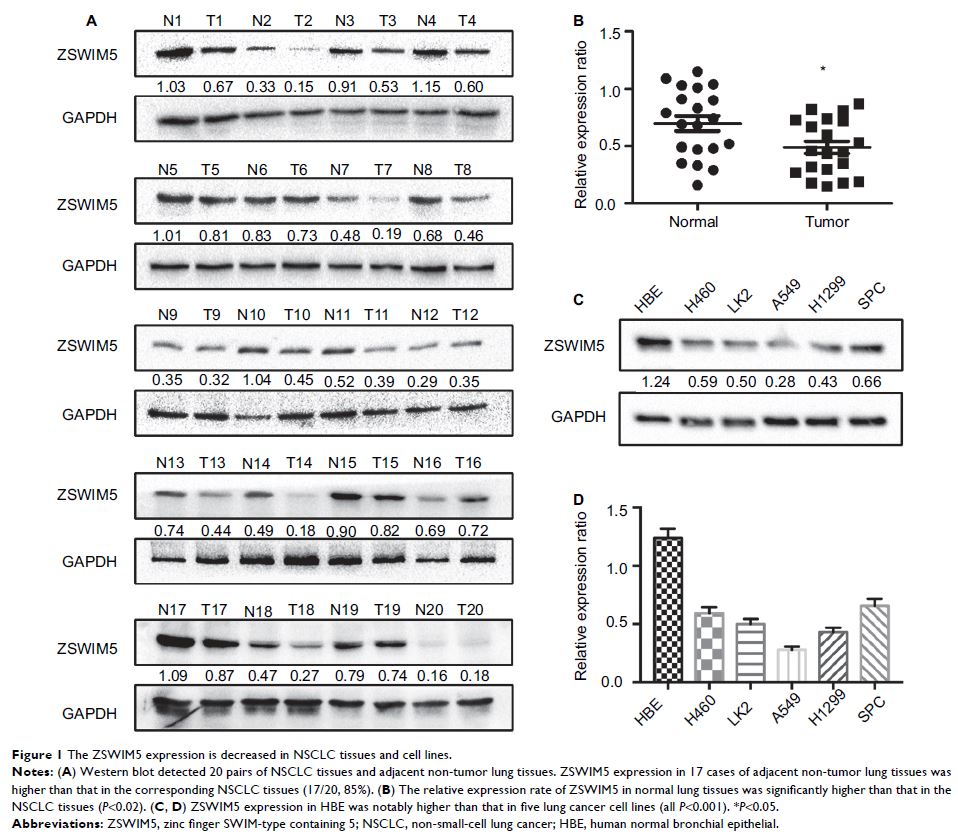108384
论文已发表
注册即可获取德孚的最新动态
IF 收录期刊
- 3.4 Breast Cancer (Dove Med Press)
- 3.2 Clin Epidemiol
- 2.6 Cancer Manag Res
- 2.9 Infect Drug Resist
- 3.7 Clin Interv Aging
- 5.1 Drug Des Dev Ther
- 3.1 Int J Chronic Obstr
- 6.6 Int J Nanomed
- 2.6 Int J Women's Health
- 2.9 Neuropsych Dis Treat
- 2.8 OncoTargets Ther
- 2.0 Patient Prefer Adher
- 2.2 Ther Clin Risk Manag
- 2.5 J Pain Res
- 3.0 Diabet Metab Synd Ob
- 3.2 Psychol Res Behav Ma
- 3.4 Nat Sci Sleep
- 1.8 Pharmgenomics Pers Med
- 2.0 Risk Manag Healthc Policy
- 4.1 J Inflamm Res
- 2.0 Int J Gen Med
- 3.4 J Hepatocell Carcinoma
- 3.0 J Asthma Allergy
- 2.2 Clin Cosmet Investig Dermatol
- 2.4 J Multidiscip Healthc

一种新型的 SWIM 结构域蛋白 ZSWIM5 可抑制非小细胞肺癌的恶性进展
Authors Xu K, Liu B, Ma Y, Xu B, Xing X
Received 17 May 2018
Accepted for publication 25 June 2018
Published 4 September 2018 Volume 2018:10 Pages 3245—3254
DOI https://doi.org/10.2147/CMAR.S174355
Checked for plagiarism Yes
Review by Single-blind
Peer reviewers approved by Dr Amy Norman
Peer reviewer comments 3
Editor who approved publication: Dr Antonella D'Anneo
Purpose: Zinc finger SWIM-type containing 5 (ZSWIM5) is a newly discovered protein, which contains a novel zinc-chelating domain SWIM (CxCxnCxH), and is predicted to interact with DNA or proteins. Currently, the knowledge of functions of ZSWIM5 remains limited. In this study, we aimed to elucidate the biological functions of ZSWIM5 and their mechanisms.
Patients and methods: We detected the expression of ZSWIM5 in samples from 139 cases of non-small-cell lung cancer (NSCLC) patients and six cell lines using immunohistochemistry and Western blot. Moreover, we explored the biological functions of ZSWIM5 in lung cancer cells by siRNA interference and cDNA transfection of ZSWIM5.
Results: The results showed that compared with adjacent non-tumor lung tissues, ZSWIM5 expression was significantly decreased in NSCLC tissues (P =0.0199) and that the ZSWIM5-positive rate in non-tumor tissues (76.67%) was notably higher than that in NSCLC tissues (40.29%). ZSWIM5 expression in human normal bronchial epithelial cells was also much higher than that in lung cancer lines (P <0.001). ZSWIM5-negative expression was significantly related to TNM stage (P <0.001), lymph node metastasis (P =0.002), and poor prognosis (P <0.001) of NSCLC patients. MTT and colony formation assays showed that ZSWIM5 could inhibit the proliferation and colony formation abilities of lung cancer cells. Meanwhile, the results of transwell and wound healing assays showed that ZSWIM5 could suppress the invasion and migration of lung cancer cells. Further investigation revealed that ZSWIM5 could downregulate cyclin D1, cyclin E, cyclin A2, MMP2, and MMP9 expression, which affected the proliferation, invasion, and migration abilities of lung cancer cells.
Conclusion: ZSWIM5 could inhibit the malignant progression of NSCLC by affecting the expression of cyclins and MMPs.
Keywords: NSCLC, zinc finger, proliferation, invasion, migration
